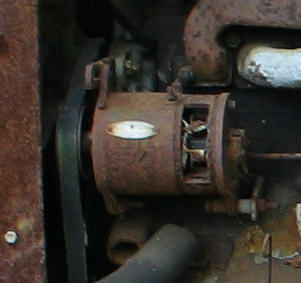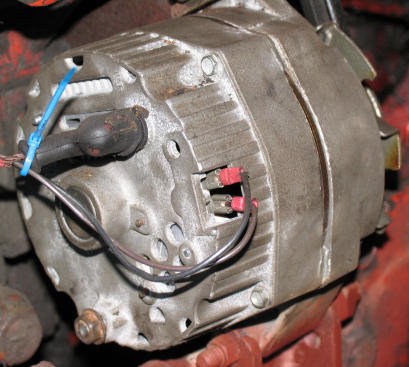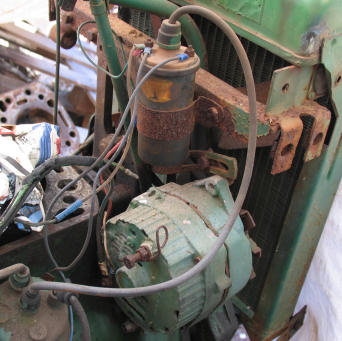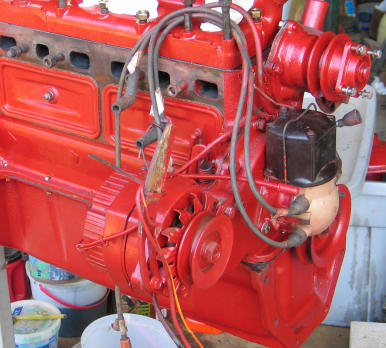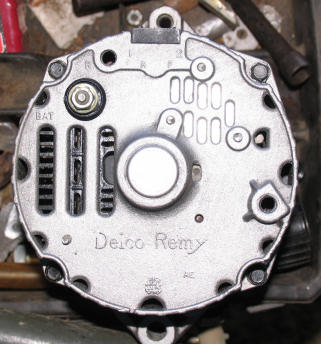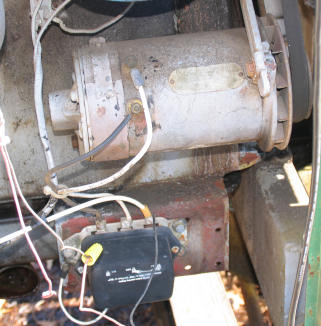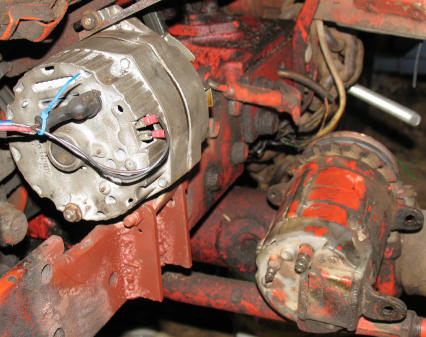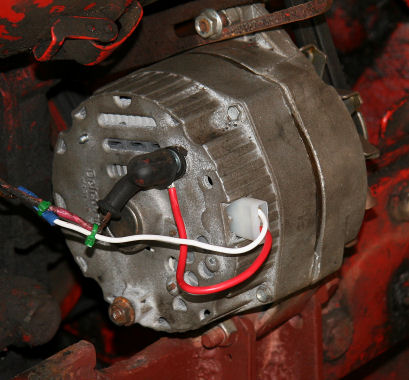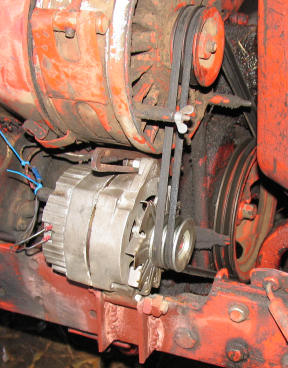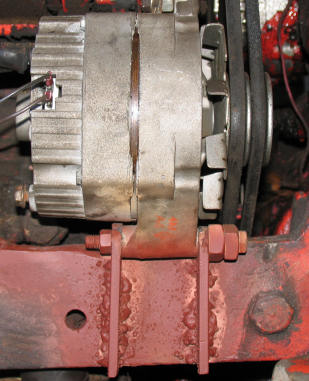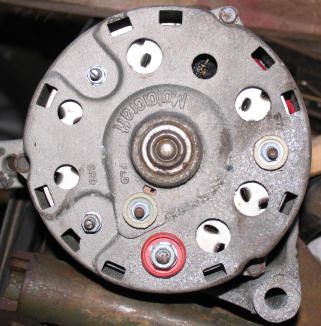|
Most conversions are cheap and
easy. Advantages are quicker starting, cheaper parts, common
12volt batteries and lamps. The only negative is if you are
a showman. A 1948 JD-M did not come from the the factory with
an alternator and you will lose points if you have one.
The alternator is not the only
cost. If you have lights, you will have to install new 12v
bulbs. Ignition coils will have to be replaced or a ballast
resistor will have to be added to tractors with distributors. Ammeters,
tachs, oil pressure gauges should not be affected, unless lighted.
The old 6volt starter will be fine.
Eventually, we will have enough
examples here so you can convert with just about anything you have
around the shop.
If you have to buy, we recommend
the Delco / Chevy 10SI. Tell your parts guy you want one for
a '72 El Camino. Then tell him you need a single or double
pulley. Usually a single is what you want. In some cases,
you might want to go with a one wire version. It is usually
the easiest, but costs a little more. We have bought both versions
locally and on eBay.
As for brackets, they are not too
hard to adapt or fabricate. Usually some pipe or washers will
do. If not, you can find custom conversion brackets on eBay.
|
